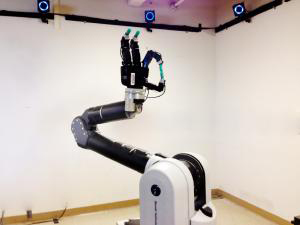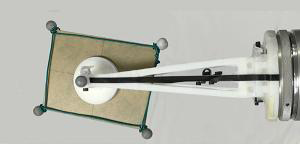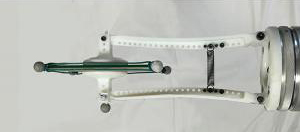Dynamic and Nonprehensile Manipulation: In-hand Sliding Manipulation
About
Many human and animal manipulation tasks involve controlling motion of the object relative to the manipulator, particularly in nonprehensile (graspless) manipulation modes such as pushing, rolling, pivoting, tipping, tapping, and kicking. Even in pick-carry-place manipulation, where the carry portion of the task keeps the object stationary relative to the hand, the pick and place phases typically involve the object sliding or rolling on the fingers as the hand achieves a firm grasp or lets the object go. Other examples of controlled relative motion in grasping manipulation include finger gaiting, where the fingers quasistatically walk over the object to achieve a regrasp, all the while maintaining a stable grasp; rolling the object on the fingertips; and letting the object slide relative to the fingertips. Together we refer to these types of relative motion as in-hand manipulation.
Purposes for studying in-hand manipulation by controlled sliding:
1.) Error-corrective Sliding in an Assembly Task
 The problem is to choose a grasp configuration satisfying force-closure constraints as well as providing error-corrective sliding motion in response to likely disturbance forces during the place operation. For example, uncertainty in a peg-in-hole assembly task results in contact forces that should be mapped to error corrective motion, using the springs of the RCC device or using active accommodation control. Alternatively, it is possible to use sliding at the fingertips as the source of compliance. By the choice of finger locations and normal forces, we can control the mapping from contact forces to sliding directions, much like an accommodation control law maps contact forces to corrective velocities.
The problem is to choose a grasp configuration satisfying force-closure constraints as well as providing error-corrective sliding motion in response to likely disturbance forces during the place operation. For example, uncertainty in a peg-in-hole assembly task results in contact forces that should be mapped to error corrective motion, using the springs of the RCC device or using active accommodation control. Alternatively, it is possible to use sliding at the fingertips as the source of compliance. By the choice of finger locations and normal forces, we can control the mapping from contact forces to sliding directions, much like an accommodation control law maps contact forces to corrective velocities.
2.) Regrasping Using External Contacts
 In this task, the goal is to achieve a desired object configuration relative to the hand. Contact with the environment is used to generate forces that cause the object to slide relative to the fingers to a desired new grasping configuration.
In this task, the goal is to achieve a desired object configuration relative to the hand. Contact with the environment is used to generate forces that cause the object to slide relative to the fingers to a desired new grasping configuration.
3.) Regrasping Using Dynamic Loads
 In this task, the hand uses object inertia to cause it to slide to the desired new grasp by accelerating the hand beyond the point the finger friction forces can resist relative motion. The video below demonstrates results from our recent work in which we address this problem and regrasp an object by planning dynamic sliding motions.
In this task, the hand uses object inertia to cause it to slide to the desired new grasp by accelerating the hand beyond the point the finger friction forces can resist relative motion. The video below demonstrates results from our recent work in which we address this problem and regrasp an object by planning dynamic sliding motions.
Related Publications
Dynamic In-hand Sliding Manipulation, IEEE Transactions on Robotics, vol. 33, no. 4, pp. 778-795, 08/2017/ 2017 DOI Google Scholar PDF Video
Dynamic In-hand Sliding Manipulation, Intelligent Robots and Systems (IROS), 2015 IEEE/RSJ International Conference on, Hamburg, Germany: IEEE, pp. 870 - 877, Sept. 2015/ 2015 DOI Google Scholar PDF Video
Back to top